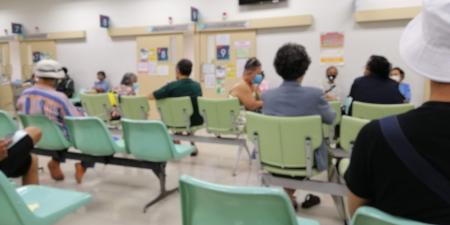Abstract
Inpatient admission of unhoused patients from an emergency department is becoming more frequent. Clinicians have ethical obligations to engage early in thorough discharge planning for these vulnerable patients, as discharge to the street or even to a shelter can produce poor health outcomes. This commentary on a case considers factors that influence safe discharge planning and execution, including linkage to follow-up, patient engagement, and multidisciplinary teamwork.
Case
DP is a 52-year-old woman admitted to University Hospital (UH) for a below-the-knee amputation (BKA). DP has no known friends or relatives and came to UH from a shelter. Following a 6-day stay, DP is ready to be “discharged to home.” The case manager, GG, notes, however, that regional shelters are currently full. With Dr A, who oversaw DP’s inpatient stay, GG canvasses available discharge options: UH postpones discharge and keeps DP at UH to await a shelter opening; UH rents a motel room temporarily for DP; UH discharges DP “to the streets,” knowing she will be unsheltered; or UH tries to secure a bed for DP at a regional long-term acute care hospital (LTAC) known to accept a limited number of patients with no income by making a case that proper clinical management of DP’s wound site and infection risk requires regular diagnostic follow-up. GG sees no notes in DP’s electronic health record that such follow-up is indicated, but because DP has diabetes that is not well controlled, GG approaches Dr A about this option.
Dr A is certainly not comfortable discharging DP to a shelter, much less to the streets, and worries that “DP will just get sick again and have to be readmitted if we pursue either of those options. I’d really just be turfing her to the future.” Dr A and GG consider their options.
Commentary
Homelessness is on the rise worldwide, with numbers in some countries increasing due to the economic strain of the COVID-19 pandemic.1 Individuals experiencing homelessness suffer from high rates of morbidity and access preventative services at a lower rate than those who are housed.2 These factors contribute to higher rates of hospitalization for those experiencing homelessness.3 Once hospitalized, persons without stable housing experience longer lengths of stay, partly due to nonmedical discharge delays.3 Pressure to discharge those no longer in need of acute inpatient medical care can present clinicians with multiple ethical dilemmas. Here, I use the clinical case of DP to examine various factors clinicians must address to safely discharge their patients experiencing homelessness. Such planning requires early detection of patient needs, multidisciplinary teamwork, creative problem solving, emphasis on patient-centered and evidence-based decision making, and advocacy for system-wide change.
Patient Factors
The physical care of a hospitalized patient is of overt importance. In our case, DP has just undergone a BKA. Even under the best of circumstances, BKAs are associated with a high rate of readmission for stump complications, with wound infection being the leading cause. More than one third of these readmissions result in surgical revision (ie, above-the-knee amputation).4 Because DP does not have a stable place to live, she lacks access to routine hygiene. She may also lack the financial resources to purchase any necessary prescriptions (such as those to regulate her blood glucose), dressings, and other medical supplies. She is thereby at even greater risk of wound infection if discharged to the street. Yet delay in discharge is not without its own medical risks. If DP remains inpatient despite not needing acute care, she faces an increased risk of infection, reduction in mobility, and overall mortality.
Both options leave Dr A and GG suboptimally fulfilling their duty to uphold the principles of beneficence and nonmaleficence. Medical respite, defined as recuperative care for those who are too sick to be living on the street or in a traditional shelter but who are not ill enough to warrant inpatient hospitalization, allows clinicians a middle path between these 2 options. Medical respite care has been discussed in the US clinical literature since 2006 and has been shown to improve posthospitalization outcomes, including hospital length of stay and readmission rates, for those suffering homelessness.5,6 However, medical respite is not a cure-all in its current state. While respite care exists in some communities, it has yet to be widely available, as is the case for DP. Additionally, in existing medical respite facilities, there is often limited bed space, and exclusionary rules apply to certain patient behaviors, such as substance use and “challenging” behavior.5,7
As respite care is not an option for DP, Dr A might try to optimize DP’s chance of healing if discharged by arranging close medical follow-up for early detection of any reversible complications. However, persons experiencing homelessness have lower rates of follow-up than those who are housed.8 Lack of insurance coverage has been shown to be the leading barrier to follow-up for those without fixed housing.9 Unemployment can exclude those suffering from homelessness from employment-based insurance offerings, and the financial burden of purchasing private insurance can be insurmountable. Insurance applications are complex, and individuals suffering from homelessness often lack the documentation needed for such applications.10 Early discharge planning during hospitalization is an excellent opportunity to employ the assistance of an insurance navigator to begin the process of obtaining insurance.
Yet lack of insurance is not the only barrier to patient DP’s successfully arriving at her follow-up appointment. Many individuals suffering from homelessness have low health literacy,11 which impedes their understanding of the importance and logistics of follow-up. Thus, discharge planning for DP should include education on her disease, next steps in her healing journey, and how to detect complications, as well as discussion of where and how to meet with her assigned outpatient clinician.
The location and office hours of DP’s follow-up appointment may also impede her ability to attend. Transportation is an oft-cited barrier to accessing care for those without fixed housing.10 Additionally, the working poor compose a significant number of individuals experiencing homelessness.12 Inflexible employment rules and the financial strain of taking time off work often prevent the working poor from obtaining outpatient care.10 Discharge planning should therefore involve a conversation with the patient about what is feasible. Transportation vouchers, identification of clinics with after-hours or weekend appointments, or provision of a doctor’s work excuse can all go a long way to improving the patient’s ability to follow up as indicated.
Another patient factor that has ethical implications in DP’s discharge is her potential mistrust of clinicians and the overall health system. Patients suffering from homelessness cite fear of authority and past negative experiences with the health care system (eg, discrimination, stigmatization) as undermining of their trust.10 Patients might be hesitant to disclose their housing status, which can lead to delays in appropriate discharge planning; one study from the United Kingdom reported that early identification of inpatients’ homeless status is a key element in reducing hospital length of stay.13 Additionally, respect for patient autonomy and optimizing quality of life underscore the need for clear lines of communication when clinicians counsel patients about all aspects of their care. Consideration of the patient’s quality of life (including physical, emotional, psychological, social, and spiritual health) requires that the clinician know the patient’s preferences and values. Eliciting this information requires trust. And earning patient trust takes time, particularly when patients (like those experiencing homelessness) have been marginalized by society. Yet the importance of patient engagement as a distinct mechanism in successful discharge planning cannot be overstated; data show that initial engagement is as important as securing housing after discharge in terms of patient outcomes.5
A perceived or real cultural difference between clinician and patient can lead to the clinician’s avoidance of the patient and to both parties’ suboptimal engagement.
Engaging patients starts with compassionate curiosity about the patient and their context. Clinicians can use nonverbal cues, such as sitting down and putting away examination tools and cell phones, to signal both interest and respect. As stated previously, attention to the patient’s level of education and health literacy can increase clear communication. Consistency and accuracy in informing the patient of clinical aspects of care (timing of rounds, blood draws, and other diagnostic testing) can imbue a greater sense of safety. A basic social history taken at admission can be built upon in subsequent conversations to include much more than housing details and next of kin, such as sources of support and joy, faith-based or spiritual beliefs, and social or cultural identity. Open-ended questions, such as “How would you describe yourself?” or “Can you tell me a bit about your spiritual beliefs?” can help clinicians elicit a wider view of the patient’s inner world.
At times, patient preferences regarding discharge may contradict the advice of the medical team, as when patients opt for premature discharge (ie, leaving against medical advice).5 The same challenge is faced in medical respite centers, where up to a third of patients depart prematurely.5 Often, premature discharge stems from unmet patient needs. Tri-morbidity—co-occurring medical, mental, and substance use disorders—is common in persons with homelessness; one study showed that 48% of patients without fixed housing suffered from substance misuse, 33% from mental illness, and 17% from a dual diagnosis.14 These conditions are also associated with greater risk of readmission after hospital discharge11 and should be screened for and addressed during inpatient hospitalization and as an integral part of discharge planning.
When weighing patient requests, particularly those that appear to be against the patient’s best interest, the patient’s decision-making capacity must be evaluated. Generally, capacity is assumed to be present, and a formal evaluation is not necessary. However, capacity might be diminished in patients with cognitive problems, including those with mental illness. Nevertheless, clinicians must guard against societal stigma and unconscious bias against those with housing insecurity, as bias may influence capacity assessments. When patients experiencing homelessness are deemed incapable of decision making, finding a surrogate may be challenging. Like DP, many patients do not identify any next of kin or friends who can assist with their care.
Clinician Factors
Moral distress is defined as the negative feeling state experienced when a person “knows the morally correct action to take but is constrained in some way from taking this action.”15 Dr A’s moral distress is apparent as he considers the ethical conundrum of discharging patient DP. In general, health care practitioners cite feeling overwhelmed when facing the unmet health needs of those without stable housing.10 Often contributing to clinicians’ sense of helplessness is a lack of knowledge of local resources and a feeling of reaching beyond their scope of practice when addressing the financial and housing difficulties of their patients. Although not widely available, specialist services dedicated to navigating the discharge plans of patients without fixed housing might mitigate clinician moral distress. Such initiatives recognize the need for discharge planning to begin at admission for those who suffer from homelessness and typically employ clinical case managers to engage those patients and to coordinate postdischarge disposition and follow-up care.13 These initiatives can improve patient outcomes, including quality of life.2 If such specialist services are not available, collaborating with members of a multidisciplinary group with expertise in health, housing, and social work might help clinicians optimize discharge planning.5 In order to ensure flow of referrals and ease of communication, clinicians might invite the multidisciplinary team to participate in rounds.5
Unconscious bias against persons suffering from homelessness is another clinician factor that might have ethical implications for patient discharge planning. A perceived or real cultural difference between clinician and patient can lead to the clinician’s avoidance of the patient and to both parties’ suboptimal engagement.5 Clinicians’ assumptions about patients’ substance use, mental illness, or volition to engage in healthy behaviors can lead to suboptimal medical care and compromise respect for patient autonomy and patient engagement in decision making. Clinicians should strive to improve their knowledge of—and obtain training in working with—populations suffering from homelessness. Clinicians can then use their position as leaders to champion improvements in caring for those without fixed housing. Clinician familiarity with the needs of such patients might partially explain why patients suffering from homelessness treated at hospitals serving greater number of such patients have lower rates of readmissions.11
Health Systems Factors
Hospital-centered care emphasizes the financial interests of health care institutions, including UH and LTAC, as mentioned in DP’s case, rather than the interests of DP and other individuals experiencing homelessness. Increasing pressure to shorten length of stay can lead clinicians like Dr A to discharge patients with alacrity despite their being unhoused and at risk for adverse medical outcomes. Likewise, an institution’s concern about scarcity of resources (such as inpatient and LTAC beds) may impact discharge plans when medical requirements for an individual’s acute care are no longer met, regardless of potential for harm once a patient is discharged. Health care organizations’ emphasis on financial interests engenders a limited framework with acute discharge as the main goal and thus reinforces discharge to street or shelter as the standard of care. Discharge planning offers a unique opportunity to address larger patient life outcomes (such as employment, education, self-care) that may lead to housing and health.
Focus on acute inpatient discharge also makes an arbitrary distinction between inpatient and outpatient care. The American Medical Association Council on Ethical and Judicial Affairs states that the care of the physician extends beyond acute inpatient care, such that a physician “should not discharge a patient to an environment in which the patient’s health could reasonably be expected to deteriorate due solely to inadequate resources at the intended destination.”16 Increasingly, legislation supports this sentiment. For example, California’s 2019 Senate Bill 1152 states that hospitals are required to discharge patients experiencing homelessness to a social service agency or provider, a dwelling designated as the patient’s residence, or another location designated by the patient.17 The bill further states that hospitals must provide transportation, medication, and follow-up care for all such patients at discharge.16
Despite consensus statements and legislation backing improved discharge planning for those suffering from homelessness, a lack of allocated resources can prevent such plans from being realized due to limited ability to meet an optimum timeframe in transition of care and to fully address rehabilitative and resettlement goals.5
Tackling systemic problems can be a daunting task for clinicians. Clinicians might choose to lead research initiatives on the care of individuals suffering from homelessness. This endeavor is of particular importance, given the relative dearth of data on discharge planning for people experiencing homelessness.7 In addition, clinicians can advocate for individual patients without fixed housing or advocate for such patients on a larger stage.
Conclusion
Safe discharge after acute medical hospitalization of patients suffering from homelessness presents an ethical dilemma when alternatives to street or shelter are unavailable. While keeping such patients in the hospital for subacute care may seem in their best interests, prolonged hospital stay is associated with its own risks of harm. Discharge planning in such circumstances is complex and involves consideration of various patient, clinician, and systems factors. Although the current hospital-centered framework emphasizes acute patient discharge when patients are medically stable as the ultimate goal, there are many opportunities for clinicians working in the inpatient setting to alleviate moral distress and focus on patient-centered care.
References
- McCosker LK, El-Heneidy A, Seale H, Ware RS, Downes MJ. Strategies to improve vaccination rates in people who are homeless: a systematic review. Vaccine. 2022;40(23):3109-3126.
-
Blackburn RM, Hayward A, Cornes M, et al. Outcomes of specialist discharge coordination and intermediate care schemes for patients who are homeless: analysis protocol for a population-based historical cohort. BMJ Open. 2017;7(12):e019282.
- Feigal J, Park B, Bramante C, Nordgaard C, Menk J, Song J. Homelessness and discharge delays from an urban safety net hospital. Public Health. 2014;128(11):1033-1035.
- Phair J, DeCarlo C, Scher L, et al. Risk factors for unplanned readmission and stump complications after major lower extremity amputation. J Vasc Surg. 2018;67(3):848-856.
- Cornes M, Whiteford M, Manthorpe J, et al. Improving hospital discharge arrangements for people who are homeless: a realist synthesis of the intermediate care literature. Health Soc Care Community. 2018;26(3):e345-e359.
-
Bring C, Kruse M, Ankarfeldt MZ, et al. Post-hospital medical respite care for homeless people in Denmark: a randomized controlled trial and cost-utility analysis. BMC Health Serv Res. 2020;20:508.
- Jenkinson J, Wheeler A, Wong C, Pires LM. Hospital discharge planning for people experiencing homelessness leaving acute care: a neglected issue. Healthc Policy. 2020;16(1):14-21.
- Funk AM, Greene RN, Dill K, Valvassori P. The impact of homelessness on mortality of individuals living in the United States: a systematic review of the literature. J Health Care Poor Underserved. 2022;33(1):457-477.
- Kushel MB, Vittinghoff E, Haas JS. Factors associated with the health care utilization of homeless persons. JAMA. 2001;285(2):200-206.
-
Campbell DJ, O’Neill BG, Gibson K, Thurston WE. Primary healthcare needs and barriers to care among Calgary’s homeless populations. BMC Fam Pract. 2015;16:139.
- Miyawaki A, Hasegawa K, Figueroa JF, Tsugawa Y. Hospital readmission and emergency department revisits of homeless patients treated at homeless-serving hospitals in the USA: observational study. J Gen Intern Med. 2020;35(9):2560-2568.
-
Meyer BD, Wise A, Grunwaldt A, Medalia C, Wu D. Learning about homelessness using linked survey and administrative data. National Bureau of Economic Research working paper 28861. May 2021. Accessed July 28, 2023. https://www.nber.org/system/files/working_papers/w28861/w28861.pdf
-
Hospital discharge of homeless people. Editorial. Lancet. 2012;379(9832):2118.
-
O’Carroll A, O’Reilly F, Corbett M, Quinn L. Homelessness, health and the case for an intermediate care centre. Mountjoy Street Family Practice; 2006. Accessed July 26, 2023. https://silo.tips/download/homelessness-health-and-the-case-for-an-intermediate-care-centre
- Fourie C. Who is experiencing what kind of moral distress? Distinctions for moving from a narrow to a broad definition of moral distress. AMA J Ethics. 2017;19(6):578-584.
-
Smith KL; Health and Human Services Agency. All facilities letter: Senate Bill (SB) 1152—homeless patient discharge planning policy and process. California Department of Public Health. January 4, 2019. Accessed August 31, 2023. https://www.cdph.ca.gov/Programs/CHCQ/LCP/Pages/AFL-19-01.aspx
-
Protecting public health and vulnerable populations in a pandemic. American Medical Association. Updated April 10, 2020. Accessed August 31, 2023. https://www.ama-assn.org/delivering-care/ethics/protecting-public-health-vulnerable-populations-pandemic



